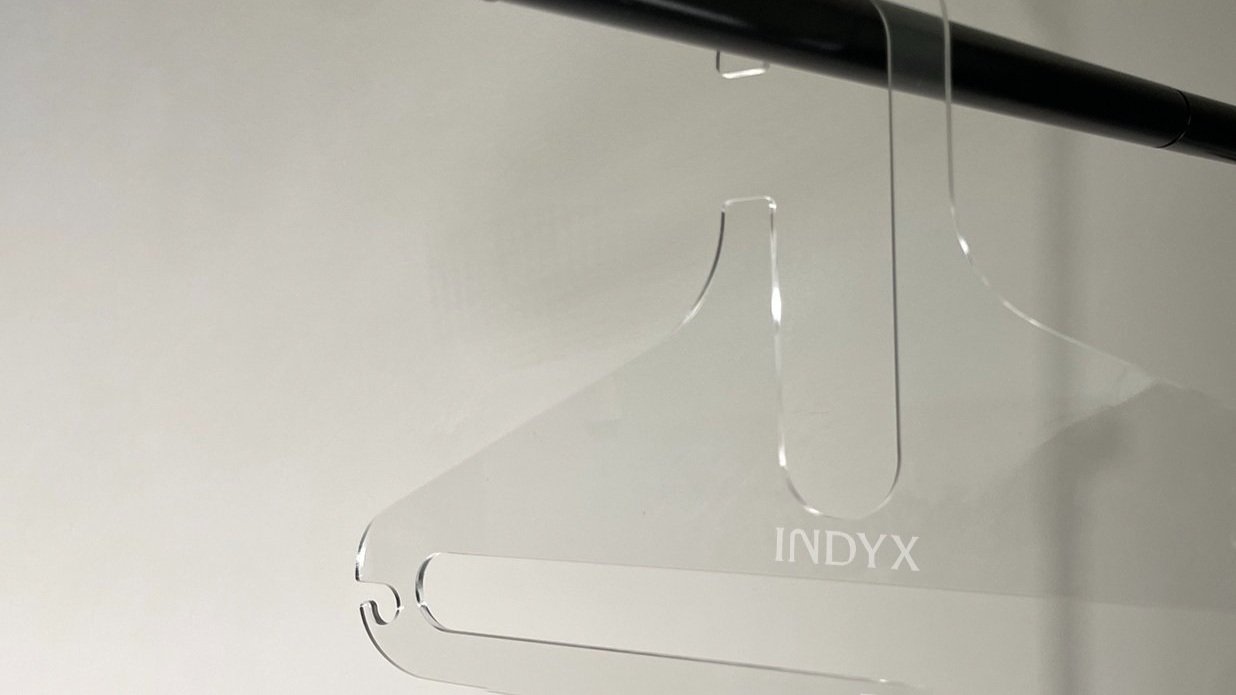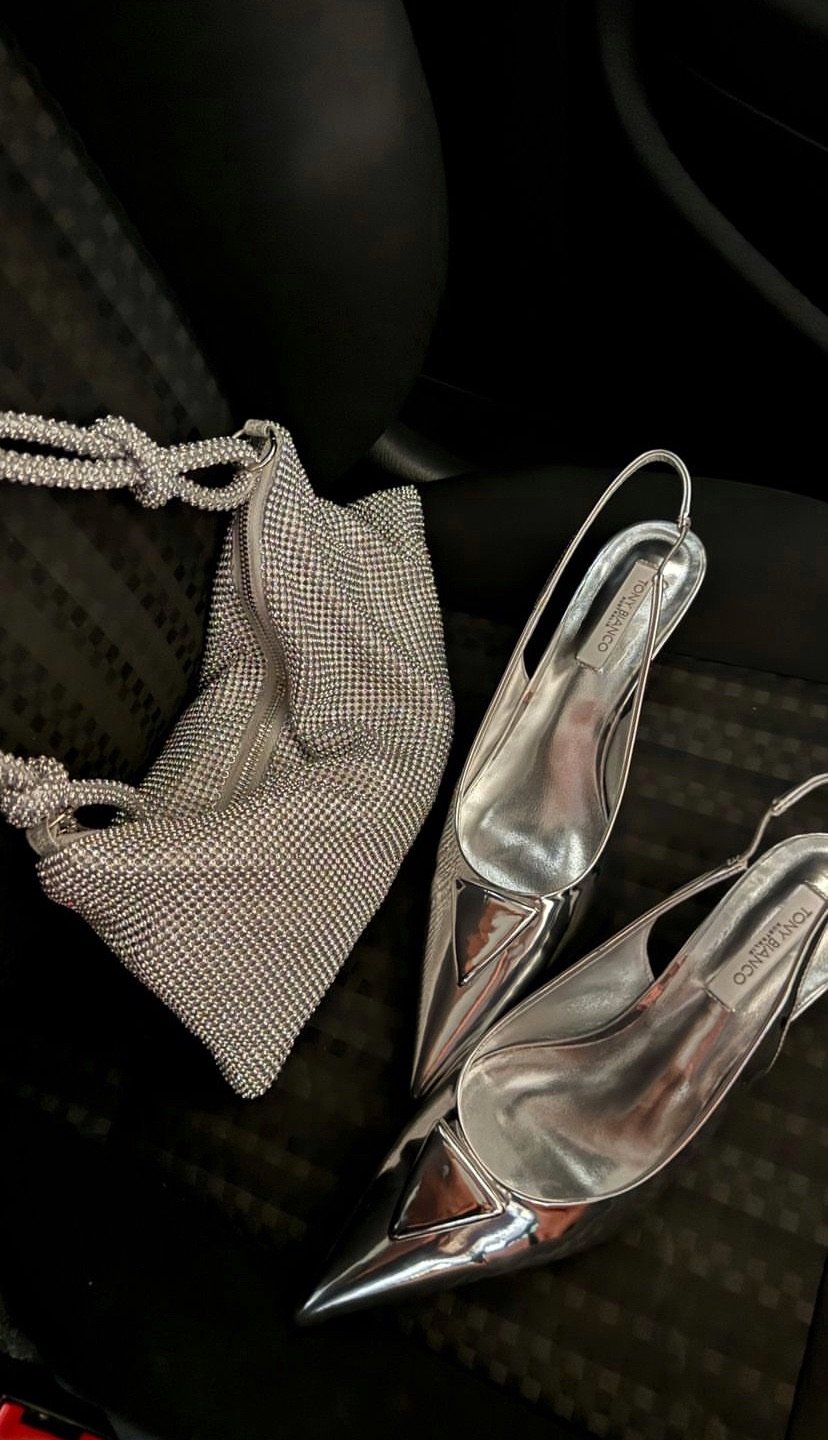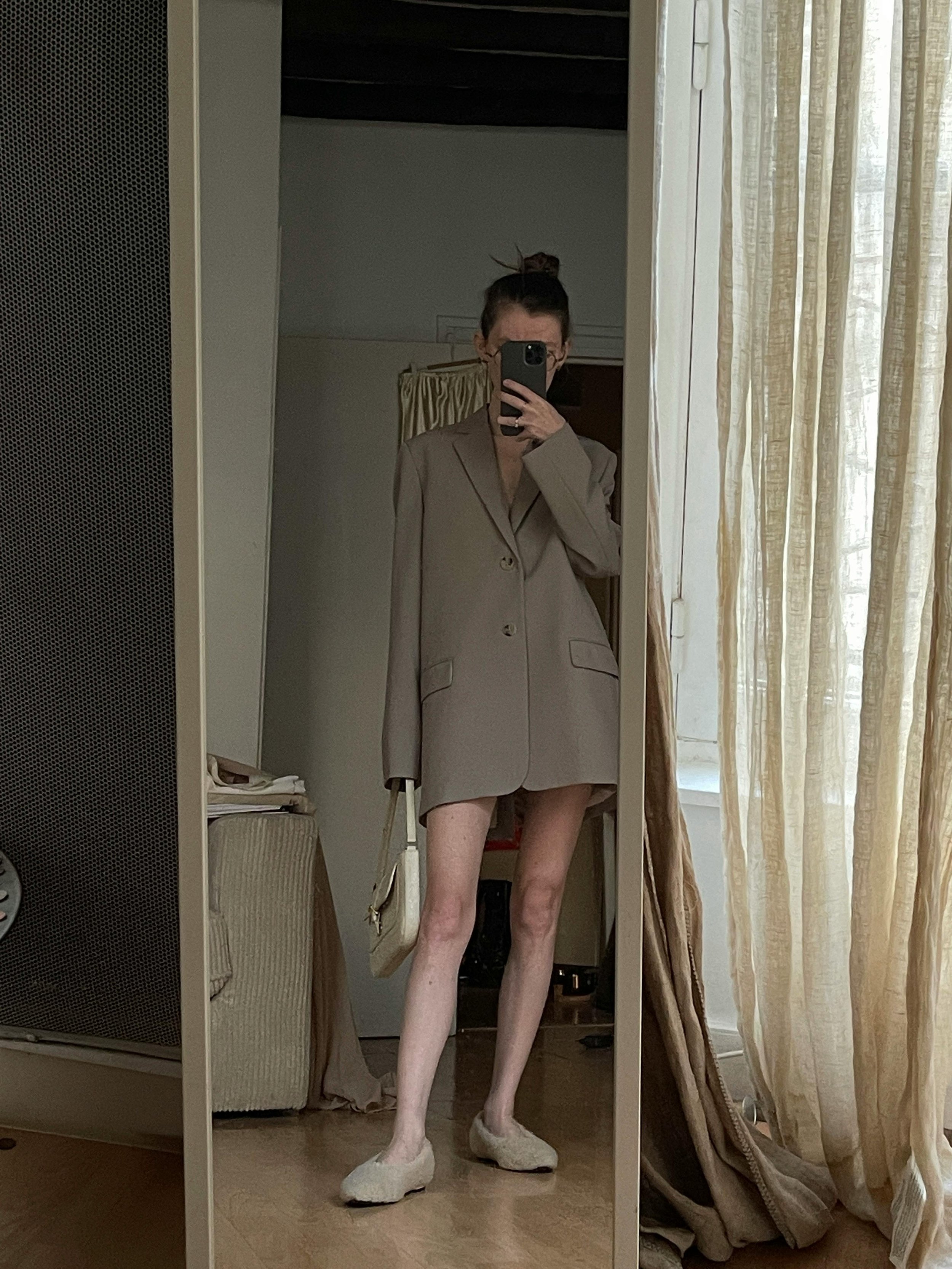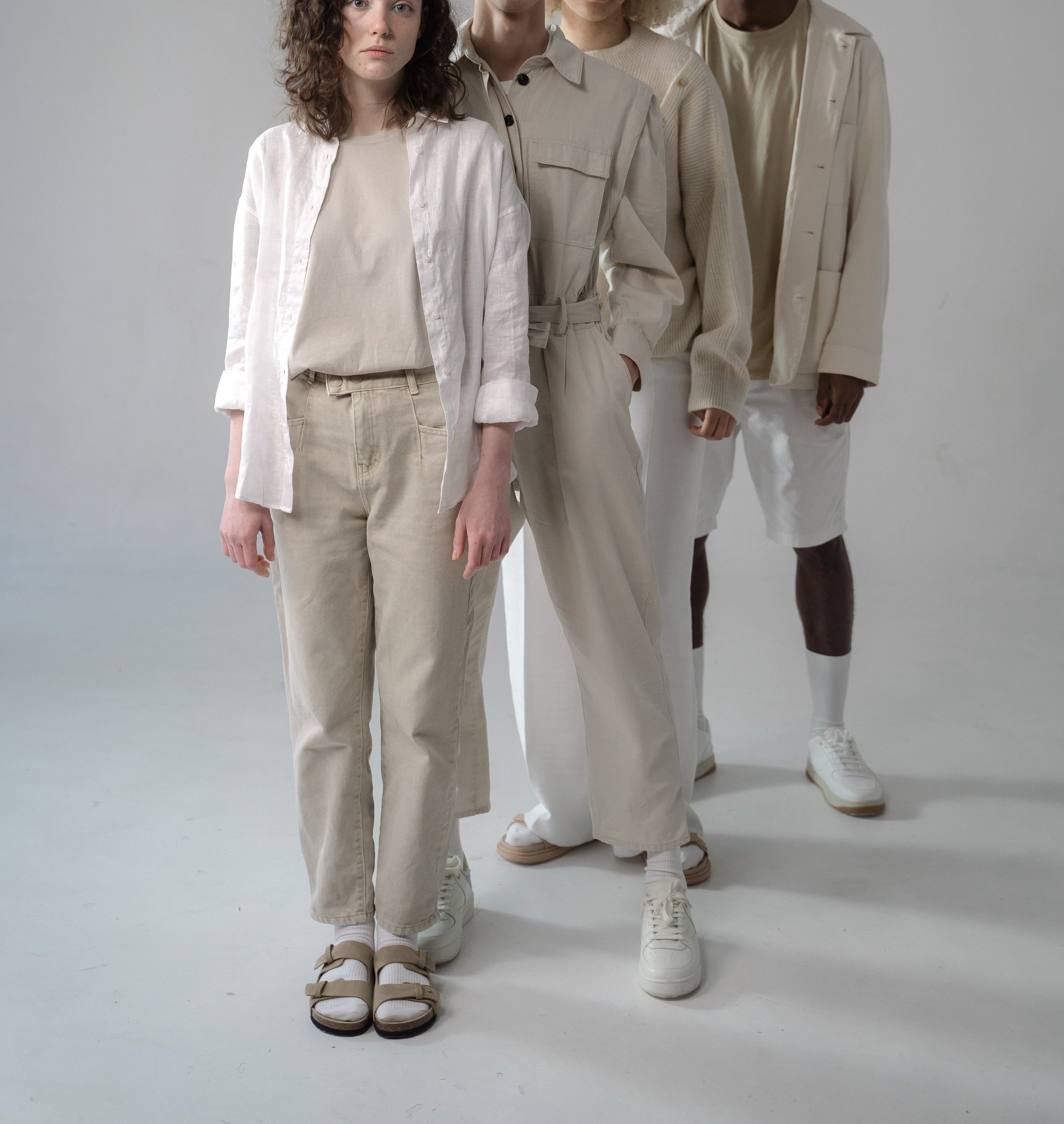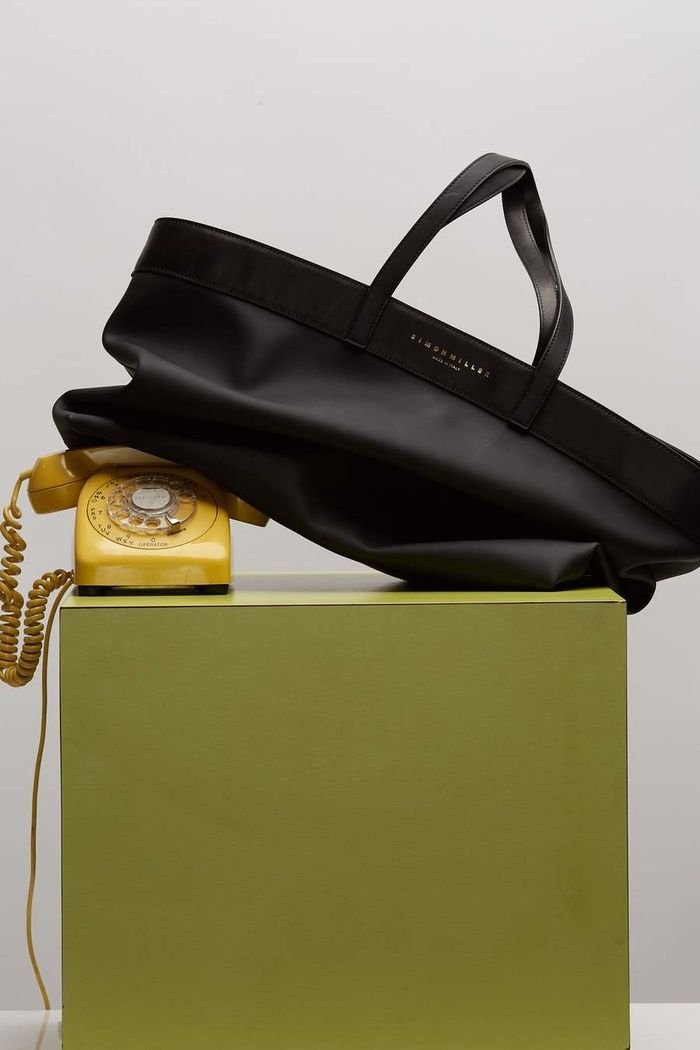Fast Fashion, Explained
In the past, we knew to expect new clothing collections four times a year, one for each season. Nowadays, many fashion brands release up to 52 “micro seasons” a year. That’s one every week! With this unprecedented speed came the term: fast fashion.
But, other than the fact that it is faster than, say, regular fashion, what does it mean exactly? What is fast fashion? And, is it as bad as people say?
What is fast fashion?
Fast fashion is a business model based around replicating runway trends with breakneck speed through low-cost mass production, and selling high volumes of these garments to as many people as possible.
If you can only pick quality or quantity, fast fashion brands are all about the latter. They release more styles, more collections, and do so more often, all at a hyper-affordable price. However, behind that attractive low price tag lies innumerable negative side effects.
A brief history of fast fashion
Fast fashion as we know it is relatively new. However, its existence resulted from a chain of events that began a long, long time ago. Let’s rewind a few hundred years.
The Industrial Revolution of the early 19th century produced major inventions for the textile industry, including the sewing machine, which allowed for clothing to be produced at much faster rates and lower costs. Queue clothing factories and… *sigh* sweatshops.
Up until WWII, women had a relatively narrow range of available styles and the trend cycle moved slowly. The silhouette and details changed over time, but at an absolutely glacial pace compared to today, sometimes taking 10 years or more to evolve.
WWII was a turning point, after which the trend cycle picked up speed - especially when Baby Boomers came of age in the 1970s, rejecting the traditional styles of older generations and embracing fashion as a means of personal expression.
Manufacturers realized they could take advantage of this demand for on-trend styles by outsourcing production overseas to countries with lower local cost of living and favorable currency exchange rates. This allowed companies to cut production costs and that also meant they could lower prices. As a result, consumers could now spend less, shop more, and expect new styles a little more often.
The snowball gathered considerable speed in the late 90s and 00s, when the internet turned the marketing industry on its head. Consumers gained unprecedented access to popular culture in real time, which increased public expectation for the fashion industry to keep up with trends and supply the ever-growing and ever-changing demand.
Today, online shopping and social media have become a pervasive part of our lives, and clothes are being produced faster than ever before. Fast fashion is now a $122 billion industry and is expected to grow to over $180 billion by 2027.
How fast fashion works
Before the fast fashion business model emerged, retailers made design decisions for the following season by speculating on which runway trends would become popular with the public, a process that required many months lead time. This is why the Spring/Summer fashion shows are typically held in September, and Fall/Winter in February.
The great “innovation” of fast fashion companies is to squeeze the process of design, production, and distribution into as little as four weeks. Rather than spend lots of time speculating on what designs to make, fast fashion companies like Zara simply rush many small orders into stores (as often as twice per week!), and then scale up additional orders more based on how well those first ones sold. This allows them to translate designs from the runway to stores within weeks rather than months, and “test” into which designs will be their winners rather than make big bets.
Regrettably, this happens at the expense of labor ethics, as the rush to produce product at hyper-speed inevitably crunches those making the clothes in an unreasonably short amount of time.
Why is fast fashion bad?
Before we get into the ethical ramifications of fast fashion and its negative effects, we have to recognize that this is a nuanced issue. There’s an inherent problem with the fashion industry, whether we put the word “fast” in front of it or not.
The primary goal of any profitable company that sells products is…well, to sell products - and the more sales, the better. With this immovable focus on the bottom line, any and every effort is ultimately a means toward increasing profits.
No matter how many “sustainable” collections a company releases, encouraging consumers to buy more and more products will always be inherently unsustainable. True sustainability in fashion would be to produce less and buy less, but that goal is in direct conflict with fashion brands’ own financial interests, so of course they won’t tell you that.
With that said, we talk about fast fashion as a problem worth addressing, not because it’s the ugly witch to “good” fashion’s damsel in distress, but because it exacerbates everything that is already wrong with the fashion industry. Fast fashion is still the fashion industry - but on steroids. So let’s take a look at some of the reasons why fast fashion is bad.
Fast fashion ends up in landfills
Fast fashion always prioritizes quantity over quality. This means that the cute top you bought from Shein will likely not hold up after you wear it just a few times. Low-cost items from fast fashion rip, lose shape, and pill much more easily.
Or just as likely, you’ll simply get bored of the micro-trend and want to move on! The top was only $10, after all - no big deal. And, with another perfectly on-trend $10 top available for you to buy, why not? This is exactly how fast fashion gets you, and trains us all to treat our wardrobes as disposable.
The top was only $10 to begin with and may not be in the best shape, so it has effectively no resale value. You might want to get rid of your item quickly, so you decide to simply trash it. You’re not alone. Every year, Americans throw away 12.8 million tons of textiles - an incredible 80 pounds for every man, woman, and child.
Or, you might donate it instead, but the hard truth is that our donation centers are overwhelmed with cheap, low-quality clothes and it is very likely that the ultimate destination is the same as if you had thrown it in the trash in the first place: the landfill.
The root of the problem isn’t just what you do with a fast fashion item once you don’t want to wear it anymore. The issue is that fast fashion is literally designed to be disposable.
Fast fashion pollutes the ocean
Fast fashion manufacturers dispose of plastic fibers, toxic chemicals, dyes, and microfibers into the ocean. And, according to Sea 2 See, “clothes account for up to 80% of all textiles entering our oceans each year.”
All of this trash released into the ocean is a major threat to marine life. Animals often get entangled in plastic, experiencing pain and struggling to function appropriately in their natural ecosystem. Sea life also ends up ingesting toxic materials like microfibers, resulting in sickness and death.
Fast fashion robs resources from people who need it to, well…live!
The intense rate at which fast fashion companies produce clothes requires an immense amount of water. Textile production consumes about 93 billion cubic meters of water per year. Considering that the average American uses about 90 gallons of water a day (far above the global average), that translates to enough water for nearly 750 *million* people.
Fast fashion (may) harm your health
In order for fast fashion companies to continue producing and selling items at a low cost, they opt for cheaper fabrics, like polyester, nylon, and acrylic. Every time these synthetic materials are washed, they release microfibers, which are tiny plastic fragments up to five millimeters long.
While these materials can add legitimate performance properties to our clothes, we cannot escape a scary fact: scientists are only beginning to understand the effects they could have on our health, including a myriad of respiratory problems like asthma, bronchitis, and autoimmune disorders. A tag that says 100% cotton sounds really amazing right about now…
Fast fashion exploits workers
Outsourcing labor to developing countries can allow companies to legitimately cut costs by paying a fair wage in a lower cost of living country. But, moving production overseas to countries like Vietnam, India, and Bangladesh also has the effect of “out of sight, out of mind”, absolving fast fashion companies from the immediate responsibility of overseeing and regulating their production.
This allows these companies to turn a blind eye to the unethical practices required to produce so much, so quickly, and so cheaply. An investigation into working conditions at Shein revealed that workers received as low as 4 cents per item, with a two-third deduction of their daily wage if they made any mistakes. Working up to 18 hours a day and receiving one day off a month, women sometimes use their lunch breaks just to wash their hair.
And, when garment workers do try to stand up against the abuse, they’re met with measures like water cannons, tear gas, and rubber bullets. In 2013, workers in a factory in Dhaka, Bangladesh, noticed cracks in the building. After notifying their managers, they were told to go back to work. Soon after, the building collapsed, killing 1,129 workers and leaving many others injured. This is known as the Rana Plaza disaster - and while it spurred some action in the 10 years since, not nearly enough has been done to prevent it from happening again.
How can you tell if a brand is fast fashion?
Like we mentioned earlier, every fashion brand ultimately wants you to buy more. Fast fashion is not as much of a black-and-white issue as it is a spectrum of how aggressively a company pushes its *sell, sell, sell* agenda. Indyx co-founder, Devon Rule, does a stellar job at explaining and contextualizing the fast fashion spectrum in this video:
But, for the sake of giving you practical yes-or-no answers on whether a certain brand is fast fashion, we consider a brand fast fashion if it:
Produces overly trendy products
Launches new products weekly (or, even more often!)
Lacks transparency about their labor ethics
Is sustainable fashion just the opposite of fast fashion? Not quite…
Learn more from Indyx co-founder Devon on the difference between a sustainable fashion and fast fashion mindset
Is [my favorite brand] fast fashion?
Is Shein fast fashion?
The epitome of fast fashion, Shein releases an average of 2,000 new items to its online store every day. There is no evidence that Shein is reducing its chemical waste, providing financial security to its providers, or paying living wages to its workers. Shein is absolutely fast fashion.
Is Cider fast fashion?
Founded in 2020, Cider reads as Shein’s *slightly* higher quality cousin. But, with restocks every week and "vintage-inspired" items (i.e. low-quality iterations), Cider is fast fashion.
Is ASOS fast fashion?
Standing for "As Seen On Screen," ASOS is the definition of a trendy brand. ASOS releases over 2,500 new items every week and any information about the actual conditions of the factories or treatment of its workers. ASOS is fast fashion.
Is Zara fast fashion?
Do we even need to ask? Zara is an OG of fast fashion, and is still one of the largest and most popular fast fashion brands, releasing new trendy styles every few days. While Zara’s parent company, Inditex, publishes some detailed information about its suppliers, they do not provide evidence of a living wage across the supply chain. Zara is fast fashion.
Is Uniqlo fast fashion?
We recognize that Uniqlo’s styles tend to be more timeless than trendy, allowing its clothing to be worn with more versatility - and, potentially more longevity. However, Uniqlo still uses mostly cheap materials, cheap production processes, and cheap labor to make clothing in large scales, so we still consider it fast fashion.
Is Aritzia fast fashion?
While its high prices may indicate higher quality, Aritzia is fast fashion. Aritzia sometimes uses some more eco-friendly fabrics like organic cotton, but the brand is still heavily trend-oriented and lacks transparency regarding efforts to reduce hazardous chemicals and fair pay for workers.
Is Princess Polly fast fashion?
Princess Polly churns out thousands of trendy styles and lacks transparency about their emissions and working conditions. Princess Polly is fast fashion.
Is H&M fast fashion?
H&M has made some progress by creating science-based methods to reduce emissions and pledged to increase their use of recycled materials, making them a *bit* better than some other fast fashion brands. However, their core business model relies on driving constant sales of low-cost, trendy products. So, H&M is still fast fashion.
Is PacSun fast fashion?
PacSun provides very little information about where or how they produce their clothing. PacSun is fast fashion.
Is Urban Outfitters fast fashion?
Urban Outfitters, which releases thousands of trendy styles and lacks transparency about their practices, is fast fashion. Although its main target audience is forward-thinking and open-minded young people, Urban Outfitters also seems to be doing very little for the environment and its workers.
Is Banana Republic fast fashion?
Considering the speed at which they put out new styles and Gap Inc’s (their parent company’s) refusal to sign the Bangladesh Accord, Banana Republic is fast fashion. However, they do offer somewhat higher-quality products that *could* last longer than many other fast fashion brands - assuming that you also decide to keep them in your closet, rather than move on to the next newest thing.
Is Brandy Melville fast fashion?
Brandy Melville shares very little about its environmental policies or factory working conditions. Because of this lack of transparency and their ever-changing, highly trend-driven assortment, Brandy Melville is fast fashion.
Is Lulus fast fashion?
Despite their CEO claiming that “[Lulus is] not a fast-fashion retailer, [but a] lifestyle brand whose loyal customers appreciate the durability, uniqueness and quality of our assortment relative to the price,” reality suggests otherwise. Lulus frequently stocks new styles at questionably low prices and lacks transparency regarding its environmental and labor practices. Lulus is fast fashion.
Comprehensive List of Fast Fashion Brands
| Brand | Trend Driven? | Frequent Releases? | Lacks Transparency? | Fast Fashion |
|---|---|---|---|---|
| Abercrombie & Fitch | Yes | Yes | Yes | Yes |
| Aerie | Yes | Yes | Yes | Yes |
| Aeropostale | Yes | Yes | Yes | Yes |
| Aliexpress | Yes | Yes | Yes | Yes |
| Amazon | Yes | Yes | Yes | Yes |
| American Eagle | Yes | Yes | Yes | Yes |
| Anthropologie | Yes | Yes | Yes | Yes |
| Boohoo | Yes | Yes | Yes | Yes |
| Cotton On | Yes | Yes | Yes | Yes |
| Cupshe | Yes | Yes | Yes | Yes |
| Dolls Kill | Yes | Yes | Yes | Yes |
| Emmiol | Yes | Yes | Yes | Yes |
| Everlane | Yes | Yes | Yes | Yes |
| Express | Yes | Yes | Yes | Yes |
| Fashion Nova | Yes | Yes | Yes | Yes |
| Forever 21 | Yes | Yes | Yes | Yes |
| Francesca’s | Yes | Yes | Yes | Yes |
| Free People | Yes | Yes | Yes | Yes |
| Gap | Yes | Yes | Yes | Yes |
| Garage | Yes | Yes | Yes | Yes |
| Halara | Yes | Yes | Yes | Yes |
| Hollister | Yes | Yes | Yes | Yes |
| Hot Topic | Yes | Yes | Yes | Yes |
| J. Crew | Yes | Yes | Yes | Yes |
| J.ING | Yes | Yes | Yes | Yes |
| Levi's | Yes | Yes | Yes | Yes |
| Lululemon | Yes | Yes | Yes | Yes |
| Madewell | Yes | Yes | Yes | Yes |
| Mango | Yes | Yes | Yes | Yes |
| Nasty Gal | Yes | Yes | Yes | Yes |
| Nike | Yes | Yes | Yes | Yes |
| Old Navy | Yes | Yes | Yes | Yes |
| Pretty Little Thing | Yes | Yes | Yes | Yes |
| Revolve | Yes | Yes | Yes | Yes |
| Romwe | Yes | Yes | Yes | Yes |
| Target | Yes | Yes | Yes | Yes |
| Tilly’s | Yes | Yes | Yes | Yes |
| Torrid | Yes | Yes | Yes | Yes |
| Windsor | Yes | Yes | Yes | Yes |
| YesStyle | Yes | Yes | Yes | Yes |
| Zaful | Yes | Yes | Yes | Yes |
How can we combat fast fashion?
For those keeping score, that makes just about….every brand you’ve ever seen fast fashion. What’s a girl to do?!
Unfortunately, both the fashion industry and individuals like you are caught up in an endless cycle of demand for more, more, more.
On one hand, fashion brands are expected by shareholders to continuously grow their business. And, a great way to do that is to get customers buying a new dress every week, hence the low-cost trendy product - so that you can afford to buy a new dress every week and also feel like you need a new dress every week.
On the other hand, individuals fall right into the trap. After all, it feels like a very fun trap to fall into! Consumers try to keep up by increasingly buying more, and, in contradiction, never feel like they have enough.
It takes intentional effort to weaken this vicious cycle and break out of it. Let’s talk about what that looks like for both sides.
As an industry
Because all product companies need to sell in order to survive, we cannot depend on them to lead. We need transformational initiatives from entities that work independently from the bottom line.
For example, in 2022, the Global Fashion Agenda (GFA) and the United Nations Environment Programme (UNEP) joined forces to create the Fashion Industry Target Consultation. The program has a strategic goal: defining actionable targets toward a net-positive industry, where fashion companies give more to the world than they take out.
But, we cannot expect corporate entities to embark on these initiatives out of sheer goodwill. Without governmental regulation capping the damage fast fashion companies cause to the planet and to people, these companies aren’t incentivized to make substantial changes on their own.
We also need new business models in fashion that succeed on a different premise entirely: not by constantly selling new things, but by helping us all get more style out of the things we have. Truly sustainable companies like Indyx - a shameless, but accurate plug - don’t depend on pushing more products. With the success of companies whose goal is to slow consumption, fashion naturally becomes less wasteful and more circular.
Learn more about why brands greenwash and how to spot greenwashing red flags
As individuals
As individual consumers, changing the fashion industry may sometimes feel like an impossible task, but we cannot neglect our collective power. We can create meaningful change by transforming our shopping and wardrobe habits. Here are some ideas of how you can do that.
Buy fewer things
The main reason fast fashion companies continue to get away with pushing products at alarming rates is that, well… people continue to buy them. By simply lowering your rate of consumption, you can chip away at that incentive and automatically achieve a more sustainable wardrobe.
Doing this can require a lot of willpower - the accessible dopamine hit of a quick, cheap purchase seems awfully attractive sometimes. But, the truth is that buying more things will not make you happy - in fact, research indicates that overconsumption actually has an opposite effect! In the long run, we actually cultivate truer happiness by investing in and appreciating the things we already have.
Buying fewer things also allows you to reap practical benefits because it frees you to focus on quality over quantity. When you commit to making fewer purchases, you also become more thoughtful about the ones you do choose to make. That way, every purchase is a building block towards achieving your true personal style (versus a throwaway item in pursuit of a fleeting trend). Not sure how to do this? Indyx can help!
Our free Style Workshop guides you toward defining your style and curating a personalized wishlist. By the end of 8-weeks, you’ll have a much clearer picture of how to actually get more style from fewer, more meaningful purchases.
Buying fewer things also means learning to shop for quality. Learn our insider tips on how to identify quality clothes regardless of brand or price.
Buy secondhand
We can make the fashion industry more circular by extending the shelf life of secondhand items instead of buying new from fast fashion companies.
Even apart from the sustainable aspect, shopping secondhand comes with a myriad of fun benefits! It allows you to buy luxury brands for less money, helps you be more intentional with your purchases, and enables you to curate a much more unique wardrobe (since the items being sold by thrift stores and vintage resellers aren’t just being replicated according to trends).
Even if you do enjoy keeping up with current trends, many of the popular trends nowadays are directly inspired by fashion from past decades, so shopping secondhand is a win-win either way.
Re-style, re-wear & repeat
According to a study that surveyed 18,000 heads of households in 20 countries, Americans have the second highest percentage of unworn clothes in their closets. Can you believe that, on average, we only wear 18% of our closets?! That’s a whole lot of untapped potential.
Offering convenient and affordable styling services (starting at just $15!), the Indyx app allows you to unlock the potential of your wardrobe with direct help from a real professional stylist. This is a great opportunity to lower your wardrobe’s cost-per-wear and appreciate what you already have, which leads to more happiness than buying something new every time we don’t know what to wear.
Take care of what you have
The fast fashion mindset tells us that when something breaks, it’s better to throw it away and buy a new one rather than fix it. It’s not true, and is unnecessarily wasteful!
Proper laundry care and occasional repairs can considerably extend the life of your clothes. Even something as simple as learning how to wash your sneakers can make them go from dingy to looking brand-new! By taking good care of our clothes instead of buying cheap new ones, we can ensure that they last a long time and that we get our money’s worth.
And, I know it sounds a little woo-woo, but taking good care of your items (regardless of how “nice” they are!) is truly a form of self-care. It shifts your relationship with the things you own, making them feel more treasured and less disposable.
Resell what you don’t wear anymore
Reselling your clothes is more accessible than ever before, with several clothing resale apps to choose from, depending on your needs. This way, you can ensure your clothes get a new life by sending them directly to a new owner that wants them.
Reselling doesn’t have to require a lot of work either. On the Indyx app, you can open your entire wardrobe open to offers, making a truly circular wardrobe more effortless than ever before!
It’s no longer possible to ignore the problematic nature of fast fashion, and the effects are pretty scary. Still, there are many actionable steps we can take to revert and stop the damage.
Adopting a sustainable mindset instead of a fast fashion one leads to a true change of habits. It requires commitment and self-reflection, but the big, transformational change we need in the industry can start small, in our homes.
Isa is a communications specialist, writer, and content creator. In her free time, she likes reading, thrifting, and decorating her place to feel like a retro-modern Pinterest board. If you see her in public, she’ll likely be enjoying a few scoops of gelato and/or admiring strangers’ dogs.
















